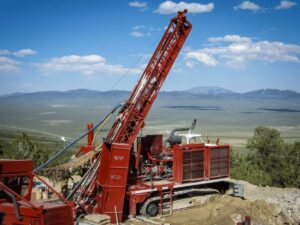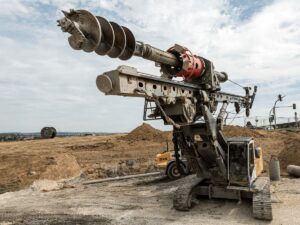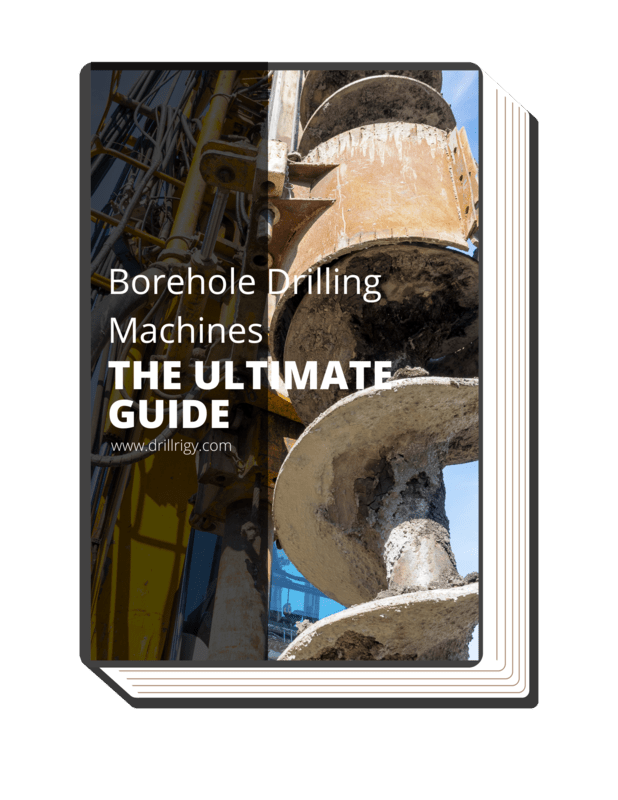Are you wondering how can your business maximize outcomes in drilling operations? The answer lies in the excellence of rotary drilling, a technique important in a variety of drilling businesses.
As experts in the field of drilling technology, our insights are grounded in years of experience and continuous innovation. We understand the complexities of borehole drilling, making us a reliable source of information for those seeking to explore this industry.
Rotary drilling method utilizes a rotating drill bit to dig through the earth, typically for water well drilling or geological exploration. It’s known for its ability to drill through a range of geological formations.
In this guide, we’ll delve into the depth of rotary drilling, a method renowned for its efficiency and versatility. You’ll gain a deeper understanding of this process and how to optimize it for your projects and business needs.
Read on to discover the force that rotary drilling hides.
1. Defining Rotary Drilling
Rotary drilling is a mechanical process used to bore deep into the earth’s crust, utilizing a rotating drill bit at the end of a drill string. This method is distinguished by its ability to cut through varying geological formations, from soft soils to hard rocks. The rotation of the drill bit breaks the rock into small fragments, which are then removed from the borehole to facilitate continuous drilling.
The efficiency of rotary drilling lies in its adaptability and the variety of drill bits available, tailored to different ground conditions. It employs a circulating fluid, usually mud or water, which cools the drill bit and carries the cuttings to the surface. This circulation system is integral to maintaining borehole stability and ensuring the efficiency of the drilling process.
2. The Mechanics of Rotary Drilling
Building on the foundational definition of rotary drilling, let’s delve deeper into its mechanics. These rotary drilling techniques and components play a significant role in the effectiveness of the process. Below are the following:
Drill Bit and Drill String
The drill bit, often made of robust materials like diamond or tungsten carbide, is the frontline tool in rotary drilling. Attached to the bottom of the drill string, it mechanically breaks the rock into small pieces. The drill string, a series of interconnected pipes, transmits rotational force to the drill bit from the surface. Elevate your drilling operations with the unmatched strength of these advanced tools.

Drilling Fluid System
A crucial component of rotary drilling is the drilling fluid system, commonly known as mud. This fluid serves multiple purposes: it cools and lubricates the drill bit, carries rock cuttings to the surface, and helps maintain borehole stability. The composition of this fluid is carefully formulated to suit the specific geological conditions encountered.

Rotation Mechanism
The rotation mechanism is vital for the rotary drilling process. It involves either a top drive system or a rotary table, which applies rotational force to the drill string and, consequently, the drill bit. This rotation is critical for the drilling process, enabling the drill bit to cut through the earth’s crust effectively.
Circulation System
The circulation system in rotary drilling involves the movement of drilling fluid through the drill string, out of the drill bit, and back to the surface. This continuous circulation is essential for removing rock cuttings from the borehole, cooling the drill bit, and maintaining borehole stability. Efficient circulation is key to successful drilling operations.
3. Advantages of Rotary Drilling
Having explored the mechanics of rotary drilling, it’s clear to see how these elements come together to offer advantages. These benefits are key in making rotary drilling a preferred method in various drilling projects. Let’s explore these advantages:
High Drilling Efficiency
Rotary drilling is renowned for its high drilling efficiency, capable of penetrating various geological formations quickly and effectively. This efficiency stems from the advanced drill bits and the powerful rotation mechanism. Such speed and effectiveness minimize operational time, making it a cost-effective solution for many drilling projects.
Versatility in Applications
The versatility of rotary drilling is another significant advantage. It can be adapted to a range of environments, from onshore to offshore locations, and for different purposes, such as water well drilling, oil extraction, or geological surveying. For example, in oil extraction, rotary drilling can reach deep reservoirs that other methods might not access as efficiently.
Enhanced Safety and Precision
Finally, rotary drilling offers enhanced safety and precision. The use of drilling fluids helps maintain borehole stability, reducing the risk of collapses. Additionally, the precision of the drill bit, combined with advanced monitoring techniques, allows for targeted drilling, minimizing environmental impact and ensuring the safety of the operation.
4. Types of Rotary Drilling Techniques
Reflecting on the advantages of rotary drilling, it’s important to understand that its effectiveness is also due to the various techniques available. Each technique has its unique applications and benefits. Let’s explore the following:
Conventional Rotary Drilling
Conventional rotary drilling is the most traditional form, where a rotary table drives the drill string and bit. This method is highly effective for shallow to medium-depth drilling operations. It’s typically used in environments where geological formations are relatively straightforward and predictable. Drillrigy borehole drilling machine excels in these conventional rotary drilling techniques, catering to a variety of drilling needs.

Top Drive Drilling
Top drive drilling represents a modern advancement in rotary drilling technology. In this method, the rotational force is applied directly to the drill string from the top of the rig, allowing for more precise control and faster drilling speeds. This technique is particularly beneficial in deep drilling operations, where control and efficiency are important.

Reverse Circulation Drilling
Reverse circulation drilling is a specialized technique where the drilling fluid and cuttings are returned to the surface inside the drill rods, rather than around them. This method is known for its efficiency in sample collection and minimal environmental disturbance. It’s commonly used in mineral exploration, where obtaining uncontaminated samples is crucial.

Air Rotary Drilling
Air rotary drilling uses compressed air instead of traditional drilling fluids. This technique is highly effective in dry, hard rock formations. An example of its application is in geothermal drilling, where it helps to prevent the contamination of natural thermal reservoirs. Air rotary drilling is also favored for its speed and reduced environmental impact compared to fluid-based drilling.

5. Key Applications of Rotary Drilling
The diversity of rotary drilling techniques translates into a wide range of applications, each catering to specific needs and environments. Here are some of the key applications where these techniques excel:
Oil and Gas Extraction
Rotary drilling is a cornerstone in the oil and gas industry, providing the means to access deep underground reservoirs. This method allows for drilling through various rock formations, reaching depths other techniques cannot achieve. The precision and control offered by rotary drilling are crucial in minimizing environmental impact and maximizing resource extraction.
Water Well Drilling
Water well drilling is another critical application of rotary drilling. As per Business Research Insights, in 2031 the water well drilling is expected to hit a growth of CAGR of 3%. This highlights the demand of rotary drilling method used for both shallow and deep water well construction, providing industries with essential water resources. Rotary drilling’s powerful ability makes it ideal for creating wells in diverse geographical locations.
Here’s a table summarizing the prospects and importance of water well drilling using rotary drilling techniques:
| Aspect |
Description |
Future Outlook |
| Market Growth |
Expected CAGR of 3% in water well drilling by 2031. |
Indicates a steady demand and growth in the sector. |
| Application of Rotary Drilling |
Utilized for both shallow and deep water well construction. |
Reflects the versatility and effectiveness of rotary drilling in water well drilling. |
| Industry Necessity |
Provides essential water resources for various industries. |
Underlines the critical role of water well drilling in supporting industrial operations. |
| Geographical Flexibility |
Suitable for diverse geographical locations. |
Demonstrates rotary drilling’s adaptability to different environmental conditions. |
| Technological Advancement |
Continual improvements in rotary drilling methods. |
Expected to enhance efficiency and effectiveness in water well drilling. |
Geotechnical and Environmental Drilling
Rotary drilling plays a significant role in geotechnical and environmental investigations. It is used to obtain soil samples, install monitoring wells, and conduct soil testing, crucial for construction projects. The precision of Drillrigy’s rotary drilling allows for accurate sampling, essential in determining soil properties. This application demonstrates the versatility of rotary drilling to support sustainable development.
6. Comparative Analysis: Rotary vs. Traditional Drilling
Understanding the key applications of rotary drilling sets the stage for a comparative analysis with traditional drilling methods. This comparison highlights the differences of each method. Here’s a detailed comparison:
Differences in Technique
- Rotary Drilling: Rotary drilling employs continuous rotational motion, making it faster and more efficient, especially in harder geological formations. It also enables the use of specialized drilling fluids for cooling, lubrication, and borehole stability.
- Traditional Drilling: Traditional drilling, such as cable-tool drilling, involves repeatedly lifting and dropping a heavy drill bit into the borehole. This method is slower and typically used for shallower wells, relying more on impact than on rotation.
Efficiency and Speed
- Rotary Drilling: Rotary drilling is significantly faster than traditional methods, particularly in harder rock formations. Its efficiency reduces overall project time and costs, making it suitable for large-scale and time-sensitive projects.
- Traditional Drilling: Traditional drilling methods are slower, as they rely on degrading action rather than continuous rotation. This can prolong drilling projects, especially in harder geological formations, potentially increasing costs and operational time.
Environmental Impact
- Rotary Drilling: Rotary drilling, with its advanced control and precision, minimizes environmental disruption. The use of drilling fluids helps contain the drilling waste and maintain borehole integrity, reducing the risk of contamination.
- Traditional Drilling: Traditional drilling methods tend to have a greater environmental footprint. The lack of a continuous fluid circulation system can lead to more significant surface disturbance and a higher risk of borehole collapse or groundwater contamination.
7. Challenges and Solutions in Rotary Drilling
While the comparative analysis of rotary and traditional drilling highlights the advantages of rotary drilling, it’s also important to acknowledge the challenges that rotary drilling faces and the solutions available. Let’s have a detailed exploration below:
Drill Bit Wear and Failure
One of the most common challenges in rotary drilling is drill bit wear and failure. The drill bit is exposed to extreme conditions, including high pressure, abrasive materials, and varying rock formations, leading to wear and potential failure. This not only affects the efficiency of the drilling process but can also lead to significant downtime and increased costs.
- Solution: The solution lies in using high-quality, durable materials for drill bits, such as diamond or tungsten carbide. Regular monitoring and maintenance of the drill bit, along with choosing the appropriate bit for specific geological conditions, can significantly reduce wear and prevent failure.
Borehole Instability
Borehole instability is another challenge, which can lead to collapses, stuck pipes, and loss of equipment. Factors contributing to instability include weak geological formations, incorrect drilling parameters, and inadequate use of drilling fluids.
- Solution: To address this, proper planning and geological surveys are essential before drilling. The use of appropriate drilling fluids to support the borehole walls and choosing the right drilling parameters based on geological data can greatly enhance borehole stability.
Environmental and Safety Concerns
Environmental and safety concerns are paramount in drilling operations. Issues such as spills of drilling fluids, noise pollution, and the risk of accidents pose significant challenges.
- Solution: Implementing strict safety protocols and using environmentally friendly drilling fluids can mitigate these concerns. Advanced monitoring systems and regular training for drilling personnel also play a crucial role in ensuring a safe and environmentally responsible drilling operation.
8. 3 Practical Tips for Efficient Rotary Drilling
Dealing with the challenges and solutions to rotary drilling provides a foundation for sharing practical tips that can enhance the efficiency of rotary drilling operations. Here are the tips that you should consider:
#1 Regular Equipment Maintenance
Regular maintenance of drilling equipment is crucial for efficient operations. This includes routine inspections and servicing of the drill bit, drill string, and other components of the drilling rig. Well-maintained equipment reduces the likelihood of breakdowns and ensures consistent performance, ultimately saving time and resources.
#2 Optimal Drilling Parameters
Selecting optimal drilling parameters such as rotation speed, weight on bit, and drilling fluid properties is essential. These parameters should be tailored to the specific geological conditions of the drilling site. Adjusting these parameters in real-time based on feedback and drilling data can significantly enhance drilling efficiency.
#3 Advanced Monitoring and Control Systems
Implementing advanced monitoring and control systems can greatly improve drilling efficiency. These systems provide real-time data on various aspects of the drilling operation, allowing for quick adjustments to optimize performance. This not only enhances efficiency but also contributes to the overall safety and success of the drilling project.
Dive Deeper Into Our Resources
Looking for more diverse product options? Browse through our handpicked selections:
Still haven’t found what you’re looking for? Don’t hesitate to contact us. We’re available around the clock to assist you.
Conclusion
In this comprehensive guide, we’ve explored the depths of this crucial process, highlighting its techniques, advantages, and practical applications. This knowledge serves as a useful resource for businesses seeking to enhance their drilling operations with efficiency and precision.
For businesses looking to elevate their rotary drilling projects, Drillrigy offers expert assistance and tailored solutions. Feel free to contact us for guidance in optimizing your drilling journey.






